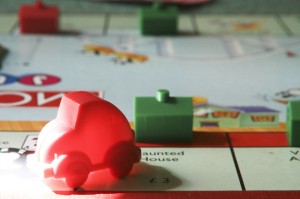The 7 Ways To Get Involved In The House Flipping Game
To really blossom in the house flipping game, you need to know the different avenues that are at your disposal.
 Flipping houses is an incredibly popular field in the real estate community. With the right ambition and knowledge, the average person can be very successful in the house flipping game. However, if you fail to educate yourself on the different approaches to this business, you might not really thrive.
Flipping houses is an incredibly popular field in the real estate community. With the right ambition and knowledge, the average person can be very successful in the house flipping game. However, if you fail to educate yourself on the different approaches to this business, you might not really thrive.
But isn’t house flipping a pretty cut-and-dry business with essentially one approach?
The answer is no. House flipping is a living ecosystem of many different people and pieces, all moving together to make a sale happen. What you need to do is diversify your mindset and find your particular place, or places, in this field.
The 7 Different Avenues
What many beginners do not realize is that there are many different ways make money in this exciting business. Some strategies don’t involve renovating or even buying at all! Below are some of the different approaches to the house flipping game.
1. Standard Fix And Flip
A fix and flip is the most basic and most commonly used tactic. This process entails three steps: buying a property, renovating it, and selling it at a higher price. While this is a simple approach, it is the most tried and tested and can often bring a substantial profit.
2. Lease Option
In a lease option, the first two steps are the same as the fix and flip. You will buy a property and fix it up. However, the third step is where the two strategies differ. In a lease option, instead of selling the property outright, you will rent it out to a tenant. The tenant will pay upfront for an “option”. This option gives the tenant the choice to buy the property once the lease is up. If they do not choose to buy it however, you can always find another buyer to sell the property to, just as you would in a standard fix and flip.
The lease option is a great strategy to use when you are waiting to the housing market to become less competitive. If you buy the house in an aggressive market, you can lease it out and still make money. Then when the market dies down, you can sell it for a greater profit than you would have if you sold it immediately.
3. Wholesaling
For up and comers in the house flipping game, a great strategy to get strategy to get your toe in the door is wholesaling. Wholesaling is similar to house flipping, but without the renovating step in the middle.
As a wholesaler, you will find a property well below market value, put it under contract, and find an investor (usually a house flipper) to sell to. The great thing about wholesaling is that you never have to use any of your own money. The investor you sell to will close in your place and pay for the house themselves. The investor will then pay you a wholesaler’s fee for finding the property, and then go on to renovate and flip.
4. Scouting
Similar to wholesaling, a scout will find a property and match it with an investor without spending any money. However, instead of selling a contract to the investor, the scout will sell information about a property.
While this strategy doesn’t generate as much profit as the others listed, it also carries less risk. There is also not as much work involved, and therefore a scout can sell information at a faster rate than a wholesaler.
5. Short Sales
In the foreclosure family of real estate, the short sale is the first of the three types. In fact, this process actually happens before the house is foreclosed upon. When a homeowner cannot pay for their mortgage, they can sell their house to and investor for less than they owe the lender. If the lender agrees, the lender will accept cash and forgive the rest of the loan.
This benefits both the seller and you, the buyer. The seller does not have to deal with foreclosure and they can save their credit rating. You, on the other hand, get the house at a lower price than normal.
6. Foreclosures
The second option is buying a foreclosure itself. You will need to look for and attend a foreclosure auction where you bid on a property against other investors. A major drawback of buying a foreclosure, however, is the fact that you cannot look at or inspect the inside of the property before purchasing. While risky, you can buy these properties at an incredibly low price compared to a typical house.
7. REOs
An REO, or “real estate owned”, property is a house that has failed to sell at a real estate auction. The lender in possession of this property wants to get rid of it before they lose any more money from insurance and upkeep. For this reason, they will sometimes sell the property at an even lower price than the foreclosure auction.
There is less risk involved in an REO than a standard foreclosure purchase because you as the buyer are allowed to look inside and even get an inspection.
